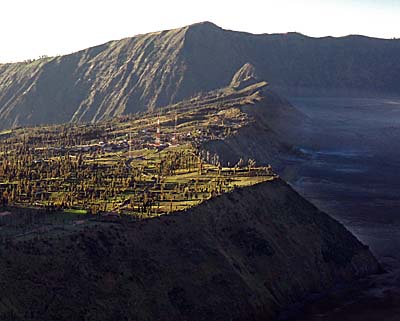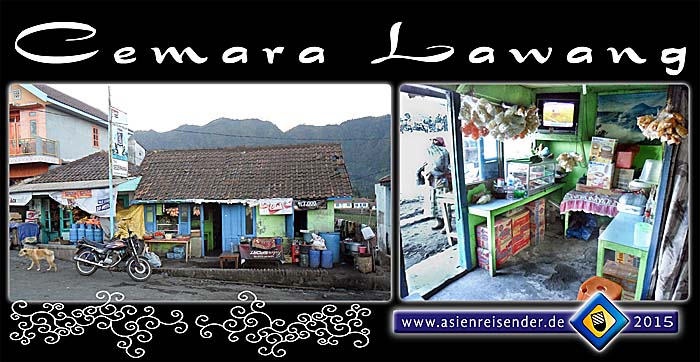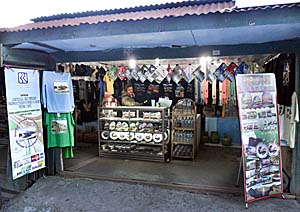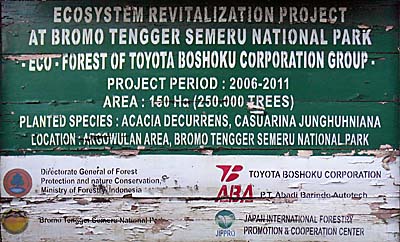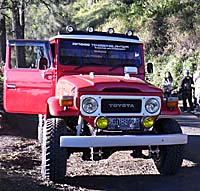1.
The Bromo Tengger Semeru Massive
Mount Bromo is one of the great stars of the Indonesian volcanos and one of the most active ones in Java, though not that active as famous Mount Merapi is. Most remarkable is the unique surrounding of Bromo. It looks rather as it would be part of a scenery of an Arabic fairy-tale. It's defenitely one of the most impressive landscapes I have ever seen.
Gunung Bromo's Crater
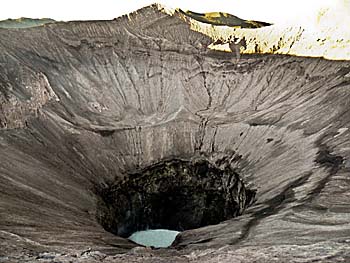
Bromo's Caldera, the abyss of the beast. It's a connection to the inner earth. Image by Asienreisender, 2012
Gunung Bromo (2329m) has a couple of neighbours and they all are situated within a sand desert, which looks pretty much as it has been the bottom of a big lake in former times, but dried out.
Bromo's neighbour Mount Batok looks on the first glance more impressive in it's outer appearance, for it's green colour and furrowed surface and it's almost perfect cone shape. Gunung Batok is also higher than Bromo is.
Though, Bromo is the star and the youngest of all the volcanos around. He had his last eruption in November 2010, which lasted until the end of January 2011.
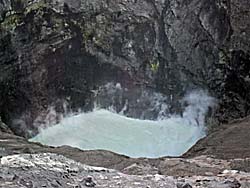
A deeper look inside the gorge. It's bubbling and steaming and one can hear it. Image by Asienreisender, 2012
The thrill here is to walk up the 250 steps who lead to the edge of Bromo's caldera. It's an impressive look deep down into the steep hole which is connected to the inner of the earth. One can see the ground, where turquoise-coloured water is bubbling; from time to time steam clouds are coming up. Would be nice to have a walk around the caldera, but it's quite risky. Some parts one has to balance on the ridge of the caldera, and it's going steep down to both sides. No pleasant imagination to fall into the crater.
Would be also interesting to have a look into the calderas of the two volcanos behind Bromo; but it's all steep and not easy to reach. By the way: the name 'Bromo' is derived from Brahma, one of the most important Hindu gods.
Since the people who live around are members of the Tengger tribe, who are not Muslims but Hindus, there is a small Hindu temple (Pura Luhur Poten) placed at the foot of Gunung Bromo. In the remote valleys of the national park do still live some leopards, but they are seldom seen.
The Bromo-Tengger Massive
Inside Bromo Tengger Semeru
National Park
View on the sand sea from the cliff's edge at Cemara Lawang (Image 1). In the early morning it's often misty; there is still mist to see on the photo. In rainy season it's reportedly often heavily raining. Supposedly the ground then fills partially with water. There is even a drain off leaving the sand sea.
The following two images are starring Mount Bromo, who looks comparably inconspicious and harmless. Nevertheless, he is the 'tiger' among the volcanos in the group.
The tiny image below shows the hindu temple at Bromo's foot. Well, yes, it's so small you don't see much on it.
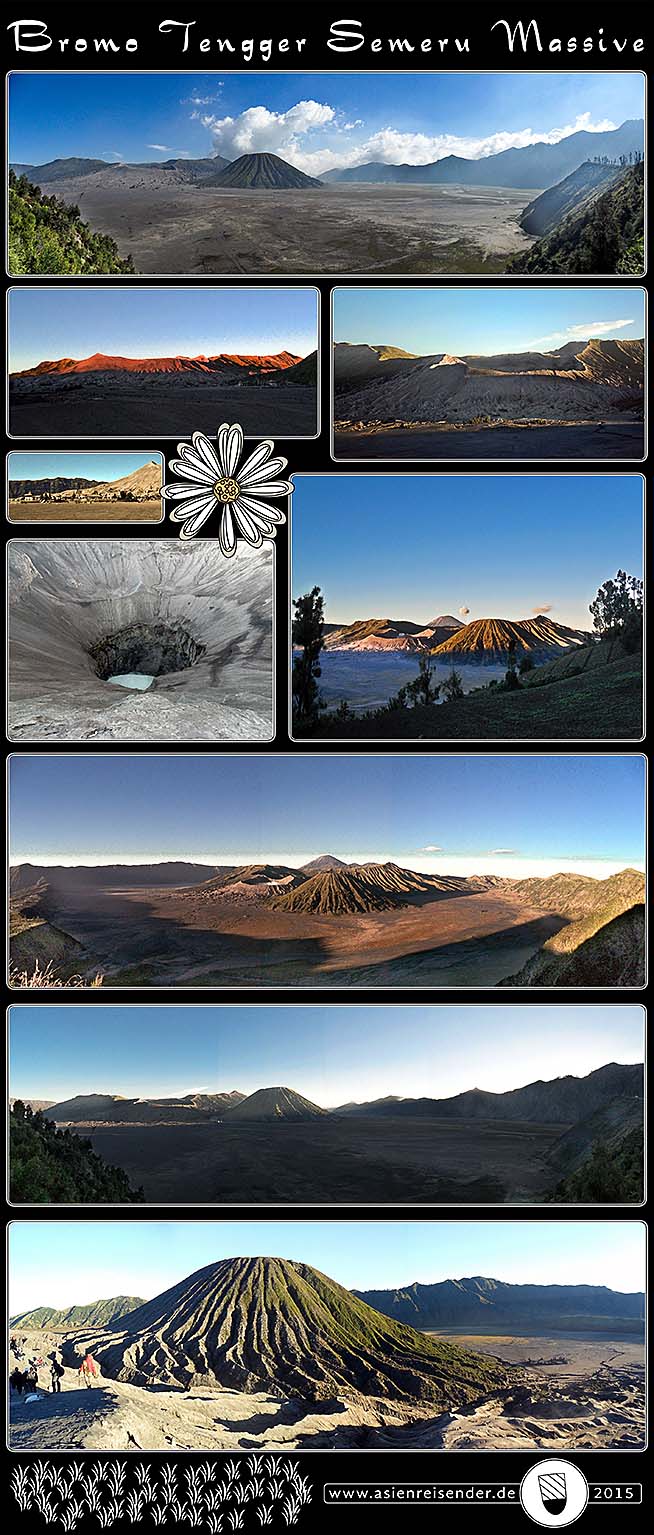
Image 5 gives us a look into Bromo's abyss. Boiling, bubbling, spitting, practically he can erupt at any moment again. Althougt the volcano is under seismological observation, he is feared for his sudden activities.
Gunung Bromo and it's neighbours seen from the way up to (Image 6) and from Penanjakan viewpoint (Image 7). The green cone in the foreground is Mount Batok (2,440 m, the only inactive volcao of the group), left of it Bromo (2,392 m), the protagonist; behind him is a bigger volcano; it's Gunung Kursi (2,581 m); behind Kursi is the biggest of the four, bigger as the three first together; that's Gunung Widudarum (2,614 m). The tallest in the very background is Gunung Semeru (3,676 m), the highest mountain on Java. Every twenty of so minutes he puffs one of the clouds out which is to see right of the peak (blown away by the wind). Gunung Semerung is no more situated inside the Tengger caldera but a few kilometers behind. Semerung is also active, dangerous, unpredictable.
Image 8 shows the group again from Cemara Lawang, now in the evening. The last image displays Mount Bartok, actually in it's regular shape with all the deep wrinkles the most aesthetic.
All photos taken in June 2012 by Asienreisender.
Click the header to enter a photocomposition of the Tengger caldera. Images and collage by Asienreisender, 2012, 2015
If one sees the picture above it looks pretty much as the sand desert has been another former caldera of a much bigger volcano. I found this idea strengthened after a longer hike to the south and around the volcano group. It all looks like the caldera of a supervolcano of former times; compared to this the 'group of the four' appears small. Bromo, Batok and the others are comparable dwarfs. The cliffs and the mountains in the background were the inner border of the Tengger supervolcano. It looks pretty much as what one can see at Lake Toba on Sumatra.
The Origins of the Tengger Massive
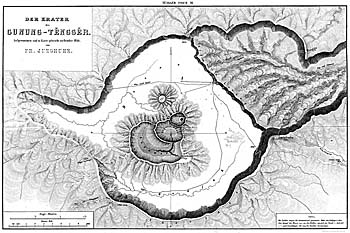
It wouldn't be a Javanese landscape if not Franz Wilhelm Junghuhn explored and mapped it. The genius created the splendid map in 1844 and published it in 'Javas Gestalt, Pflanzendecke, innere Bauart'.
The genesis of the Tengger caldera evolved over earth historic times. About 820,000 years ago a huge volcano grew 4,500m high. In a huge outbreak about 150,000 years ago a first caldera got shaped. After the collaps of the first volcano five new volcanos appeared in the caldera. These second generation volcanos are far smaller than the first, Tengger volcano was. They appear now as mountains in the Tengger caldera, which diameter is about 16km and which is lowered 110m deep from the edges of the surrounding cliffs.
After a long phase of inactivity two new volcanoes appeared at the caldera's southeastern edge. One of them is Mount Semeru, now the highest mountain in Java (3,676m).
Since 1767 CE there are 60 eruptive activities recorded. In one of the youngest and unexpected outbreaks in 2004 two people got killed. Bromo is feared for it's unpredictability.
